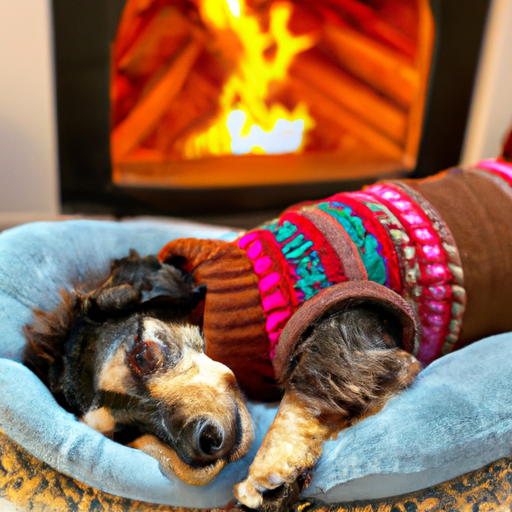1. Understanding Your Dog’s Needs
Hello, dear caregiver! Let’s dive right into the heart of the matter. You see, dogs, much like people, are individuals. They have their own quirks, likes, and dislikes. Some dogs might revel in the snow, while others might shiver at the slightest breeze. Therefore, understanding your dog’s breed, age, and health are key factors in determining how much supplementary warmth they may need.
Here’s a simplified table to guide you:
| Dog Size | Coat Type | Need for Extra Warmth |
|---|---|---|
| Small | Short/Hairless | High |
| Medium | Medium/Long | Moderate |
| Large | Thick/Dense | Low |
2. Suiting Up Your Pooch
Perhaps your dog is a pint-sized Chihuahua or a slender Greyhound, breeds that are known to be more sensitive to the cold. Or maybe your furry friend is getting on in years and doesn’t handle the cold as well as they used to. In this case, a doggy sweater or coat can be a godsend. Look for one that covers your dog from the neck to the base of the tail. Also, ensure that the fabric is comfortable and non-irritating to your dog’s skin.
The benefits of a doggy coat include:
- Provides warmth
- Protects from wind and rain
- Can be stylish and fun
3. The Right Environment
When the mercury dips and the snow starts to fall, it’s important to ensure your dog has a warm place to retreat. If your dog stays outdoors for extended periods, consider a heated dog house or a heated bed. These provide a constant source of warmth and can help prevent conditions like hypothermia and frostbite.
Remember to:
- Place the dog house in a sheltered location away from wind and rain.
- Insulate the dog house with blankets or straw.
- Always check the safety of any heating elements used.
4. Foods and Hydration
Just as we humans crave a hot cup of cocoa on a cold day, providing your dog with warm foods can help raise their body temperature. Also, ensure your dog has access to fresh, unfrozen water. Dehydration can quickly lead to hypothermia in cold weather.
Here’s a simple warm recipe for your dog:
Ingredients
- 1 cup of chicken
- 1/2 cup of carrots
- 1/2 cup of peas
Instructions
- Boil the ingredients until cooked.
- Allow the food to cool to a safe temperature before serving.
5. Regular Vet Check-ups
Lastly, regular vet check-ups are crucial, especially for older dogs. Cold weather can exacerbate conditions like arthritis, making it painful for your dog to move around. Your vet may suggest dietary changes, medication, or heated therapeutic beds to keep your dog comfortable during the winter months.
FAQs
Q: Is it okay to shave my dog’s fur in winter?
A: No, it’s best to let your dog’s fur grow out in winter to provide natural insulation.
Q: Can I use a human heating pad for my dog?
A: It’s best to use a heating pad designed for dogs, as human heating pads can get too hot for them.
Q: How long can my dog stay out in the cold?
A: It depends on the breed, age, and health of your dog. Always monitor your dog and bring them inside if they start showing signs of discomfort or cold.
Remember, as a caregiver, ensuring your dog’s warmth and comfort is a testament to your love and dedication. Let’s keep our furry friends safe and warm this winter!



